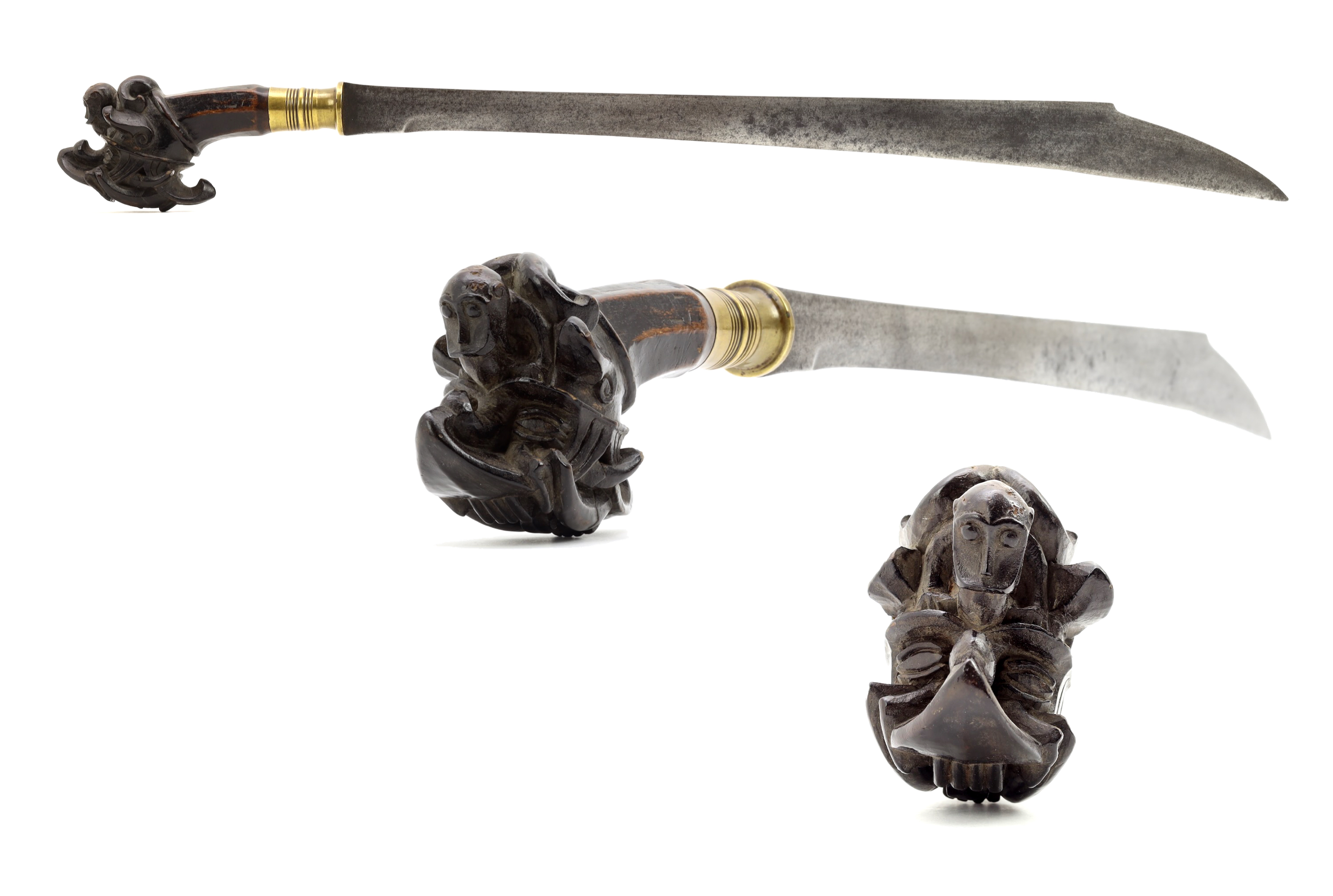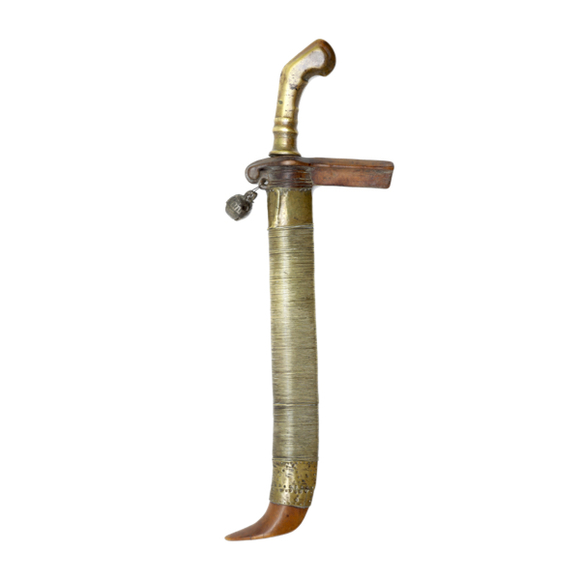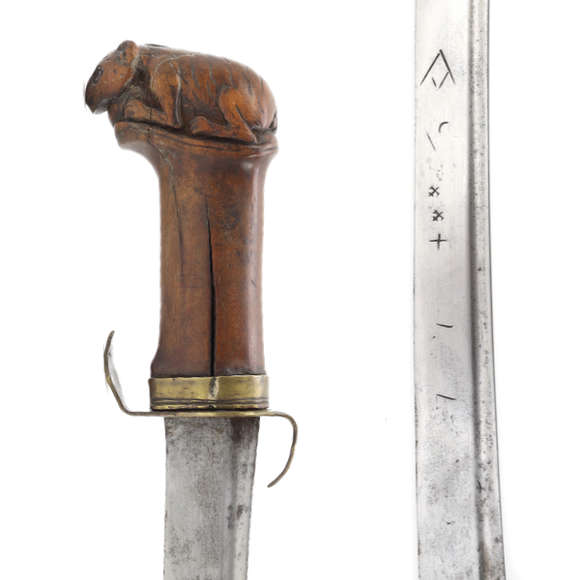Language: Nias
Source: Engelbertus Eliza Willem Gerards Schröder, 1917
Description
Niòbawa lawölò is the name for a common type of zoomorphic sword hilt from the island of Nias. An alternative name is ifòwaba lawölò.1
Usually carved of wood, but sometimes of horn, they depict an animal with open mouth and large fangs called lasara and often also a monkey like figure on top called bekhu.


A typical niòbawa lawölò from South Nias.
Depiction
Scholars do not agree about which animal these hilts attempt to portray.
Schröder argues that it is a stylized elephant, and points towards the northern name for the hilt; niòfo gàza which means "having elephant tusks".2
Fischer on the other hand argues that it is the wild boar, and I tend to agree because the Nias respect the boar's fierceness when hunted, just like the Japanese samurai. Moreover, tusks in the style of boar are part of the Nias war outfit, strengthening the idea of boar reverence when it comes to arming themselves.
Notes
1. Engelbertus Eliza Willem Gerards Schröder; Nias: Ethnographische, geographische en historische aanteekeningen en studiën. Leiden. N.V Boekhandel en Drukkerij, voorheen Brill. 1917. Page 236.
2. Ibid.
3. Fischer, H.W.; Catalogus van 's Rijks Ethnographisch Museum, Deel IV, de Eilanden om Sumatra. E.J. Brill, Leiden, 1909. Page 39.





